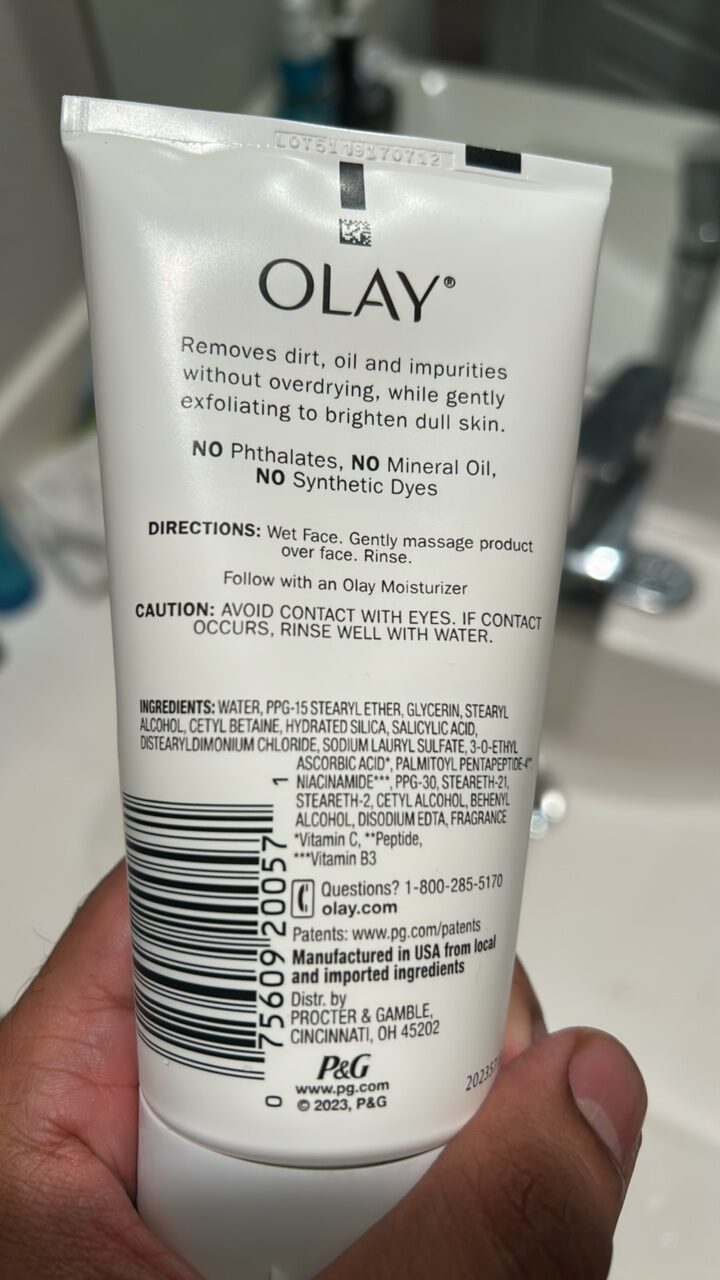
Barcode: 075609200571
OLAY
HALAL
📝 Reason: While most OLAY ingredients listed are typically Halal when derived from plant or synthetic sources, several ingredients—such as glycerin, distearyldimonium chloride, palmitoyl pentapeptide-4, and fragrance—could be animal-derived or contain alcohol, and the source is not specified on the packaging or product information. According to Islamic law (Quran 5:3), Halal status requires certainty. When doubt exists due to sourcing or formulation, scholars recommend treating the product as ‘Doubtful’ until certification or provenance is clarified. For cosmetic use, although external application is allowed by some, consuming haram ingredients or using them through permeable skin should be avoided. See IFANCA and Islamic scholars’ opinions, www.ifanca.org/ingredients.
🏷️ Category: Skin Care
📄 Certificates: No Phthalates, No Mineral Oil, No Synthetic Dyes, Patents: Www.Pg.Com/Patents, Manufactured In Usa From Local And Imported Ingredients, Vegetarisch
Ingredients:
Details
Understanding the Halal Status of OLAY
As consumers are becoming more informed about the products they use, the Halal status of cosmetics like OLAY has come into question. OLAY is a renowned brand in the skin care category, celebrated for its hydrating and anti-aging formulations. However, the concern arises when examining the ingredients list and determining if it’s suitable for those adhering to Halal guidelines.
What Does Halal Mean?
In simple terms, Halal refers to what is permissible or lawful in Islam. As dictated by Islamic law, any product that can potentially contain Haram (forbidden) ingredients or sources must be scrutinized closely. This is especially important in cosmetics, a category that can include a variety of ingredients derived from plant, mineral, or animal sources. According to the Quranic verse 5:3, if there is uncertainty about an ingredient’s origin, it is advised to treat the product as Haram until further verification.
Breaking Down OLAY’s Ingredient List
Let’s delve into the key ingredients of OLAY and assess their Halal status:
Water
The primary ingredient, water, is universally recognized as Halal. It is considered pure and does not raise any concerns.
PPG-15 Stearyl Ether
This synthetic ether is derived from petroleum and is generally considered Halal, provided there is no animal source involved.
Glycerin
Glycerin is where the concern begins. Although it can be plant-derived, it’s also noted that it may come from animal sources, making its status uncertain.
Stearyl Alcohol and Cetyl Betaine
Stearyl alcohol is a fatty alcohol usually derived from plant oils, hence Halal. Cetyl betaine, a synthetic surfactant, is also typically plant-based.
Hydrated Silica
Considered mineral in nature, hydrated silica is regarded as Halal.
Salicylic Acid
This ingredient can be either synthetic or derived from plants. Its Halal status usually stands firm, with the exclusion of ethanol in the formulation.
Distearyldimonium Chloride
However, this ingredient raises eyebrows; it can be derived from either vegetable or animal sources, hence its Halal status remains doubtful.
Sodium Lauryl Sulfate
A common ingredient in many skin care formulations, this is typically derived from plant sources and should be Halal as long as its origin is clear.
3-0-Ethyl Ascorbic Acid
This stable vitamin C derivative is synthesized chemically and is Halal.
Palmitoyl Pentapeptide-4
This synthetic peptide’s source is ambiguous, potentially being animal-derived, leading to concerns about its status.
Niacinamide and Vitamins C & B3
Both are generally synthetic or plant-derived and are Halal compliant.
Fragrance and Other Ingredients
The term ‘fragrance’ in cosmetics often raises questions since its specific origins are rarely disclosed, sometimes hiding alcohol or animal-derived components. As a result, its inclusion leads to uncertainty regarding Halal compliance.
Other ingredients like disodium EDTA, fatty alcohols like behenyl and cetyl alcohol, and several E-numbers listed, such as steareth-21 and steareth-2, are mostly derived from plant sources and thus maintain a Halal status.
Conclusion: Is OLAY Halal?
In summary, while many of OLAY’s ingredients seem Halal, there are several that raise doubts, particularly glycerin, distearyldimonium chloride, palmitoyl pentapeptide-4, and the unspecified fragrance components. The lack of clear sourcing can pose issues for those committed to strictly adhering to Halal standards.
As such, consumers who prioritize Halal cosmetics may want to consult with scholars or seek certification from authoritative bodies like IFANCA to ensure their choices align with their beliefs. For further reading and ingredient analysis, visit IFANCA.
